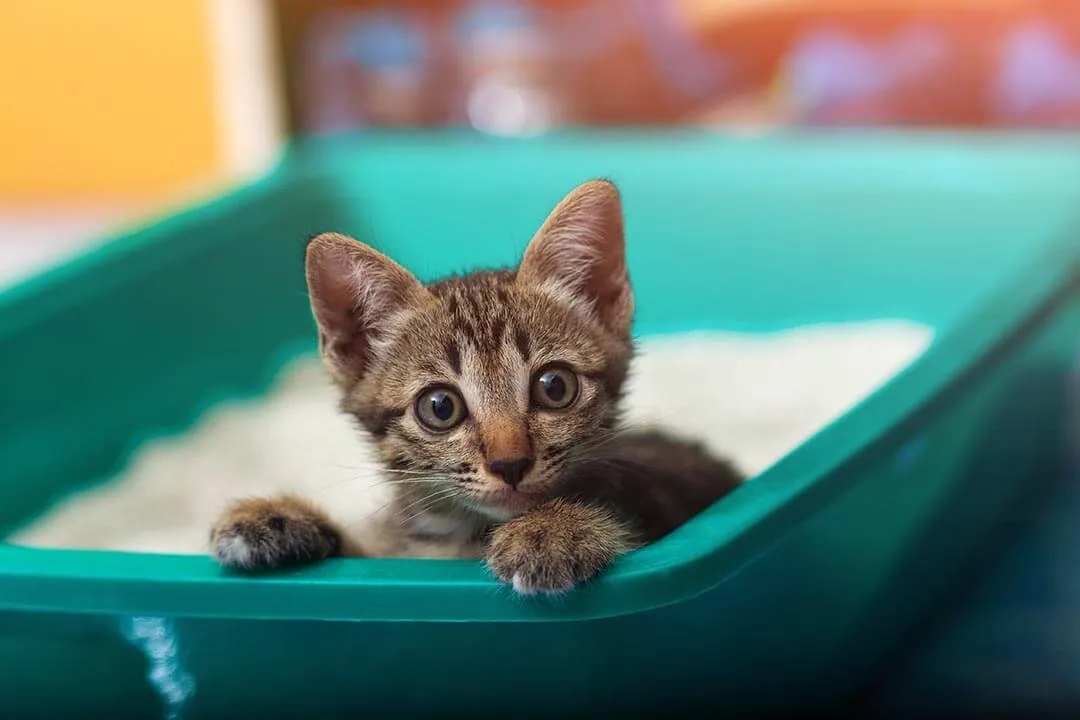Have you ever caught your cat frolicking in the litterbox, pawing at the litter like it’s a treasure trove? This quirky behavior, often seen in “why does my cat play in the litterbox” searches, is more common than you think, especially among kittens and young cats. While it can be endearing, understanding the reasons behind it helps ensure your feline friend’s health and happiness. In this guide, we’ll break down the potential causes, when to worry, and practical tips to manage it effectively. For related cat behaviors, check out insights on cat biting neck of other cat.
 kitten playing in the litterbox
kitten playing in the litterbox
Common Reasons for Litterbox Play
Cats exhibit a range of natural behaviors tied to their instincts, and litterbox play often stems from these. Veterinary experts, including those from the American Veterinary Medical Association (AVMA), note that such actions are usually harmless but worth monitoring.
Curiosity and Instinctual Exploration
Kittens and young cats are bundles of curiosity, using play to explore their environment. The litterbox, with its soft, diggable substrate, mimics natural digging behaviors from their wild ancestors. They might burrow, pounce, or roll in the litter as part of sensory development. This is particularly common in multi-cat households where the box becomes an intriguing spot. According to cat behaviorists, this phase typically peaks during the first year and fades as they mature. To support healthy development, ensure the litterbox is spacious enough for play without discouraging proper elimination habits.
Maintaining cleanliness is crucial here—a dirty box can lead to bacterial growth, increasing risks of infections like feline lower urinary tract disease (FLUTD). Scoop daily and fully change litter weekly, using unscented, clumping varieties preferred by most cats.
Territorial Marking and Scent Communication
Cats rely heavily on pheromones for communication, and the litterbox is a scent hotspot. Playing in it allows them to mix their scent with the existing odors, reinforcing territory—especially vital in homes with multiple pets or recent changes like a new arrival. This instinctual behavior helps reduce stress and conflicts. Providing one litterbox per cat plus one extra, as recommended by the ASPCA, minimizes competition and encourages appropriate use.
If your cat seems overly fixated, observe for signs of stress, such as excessive grooming or hiding. Environmental enrichment, like pheromone diffusers, can complement litterbox maintenance for a harmonious home.
When Litterbox Play Signals a Problem
Not all litterbox antics are benign. Sudden increases in play, especially if paired with straining, frequent visits without elimination, or blood in urine, could indicate urinary tract infections (UTIs), bladder stones, or constipation. The Cornell Feline Health Center reports that up to 10% of cats experience urinary issues annually, often mistaken for behavioral quirks.
Stress from household changes—moving, new pets, or loud noises—can also manifest as unusual litterbox focus. Watch for accompanying symptoms like aggression, appetite loss, or vocalizing during box visits. Early vet intervention is key; a simple urine analysis can rule out medical causes.
For dynamic play patterns, explore chasing a cat behaviors that might overlap with litterbox fixation.
Practical Tips to Redirect and Prevent Issues
Addressing “why does my cat play in the litterbox” involves proactive management rooted in feline welfare best practices.
Optimal Litterbox Maintenance Routine
A spotless litterbox is non-negotiable. Daily scooping prevents odor buildup, while weekly deep cleans with mild soap (no harsh chemicals) keep it inviting for elimination, not play. Opt for litter depths of 2-3 inches to satisfy digging urges without excess mess. Track usage patterns to spot deviations early—apps like Litter-Robot logs can help tech-savvy owners.
Boosting Enrichment Outside the Box
Redirect energy with dedicated play zones. Interactive toys like feather wands, puzzle feeders, and cat trees provide mental stimulation, reducing litterbox appeal. Schedule 15-20 minutes of daily play, mimicking hunting instincts. Vertical spaces and scratching posts further satisfy territorial needs, promoting overall well-being.
Veterinarians emphasize individualized care: senior cats may need low-sided boxes for arthritis, while multi-cat homes benefit from separated locations.
Conclusion: Ensuring a Healthy Litterbox Routine
In summary, your cat playing in the litterbox often reflects natural curiosity, territorial instincts, or simple fun, but vigilance for health red flags is essential. By prioritizing cleanliness, enrichment, and vet check-ups, you can foster positive habits and a stress-free environment. Consult a veterinarian promptly for personalized advice, drawing from trusted sources like the AVMA guidelines.
Ready to enhance your cat’s routine? Explore more cat care tips on our site and share your experiences in the comments below!
References
- American Veterinary Medical Association (AVMA): Feline Behavior Guidelines
- ASPCA: Litterbox Best Practices
- Cornell Feline Health Center: Urinary Tract Health in Cats
